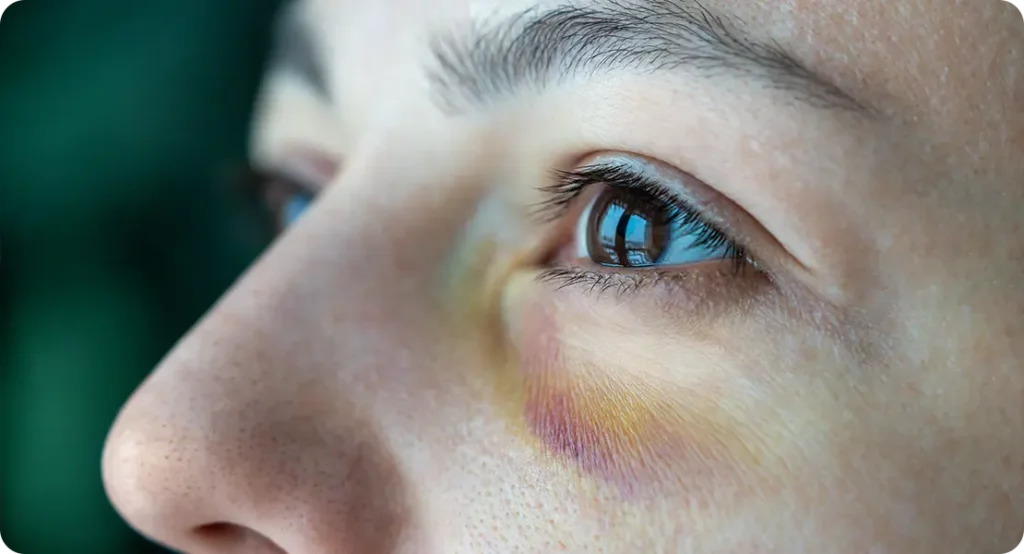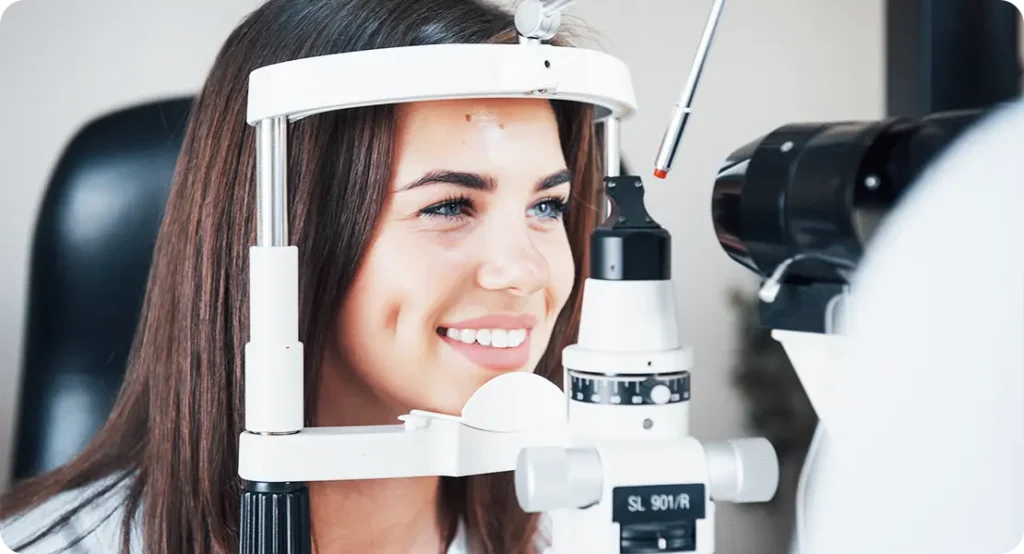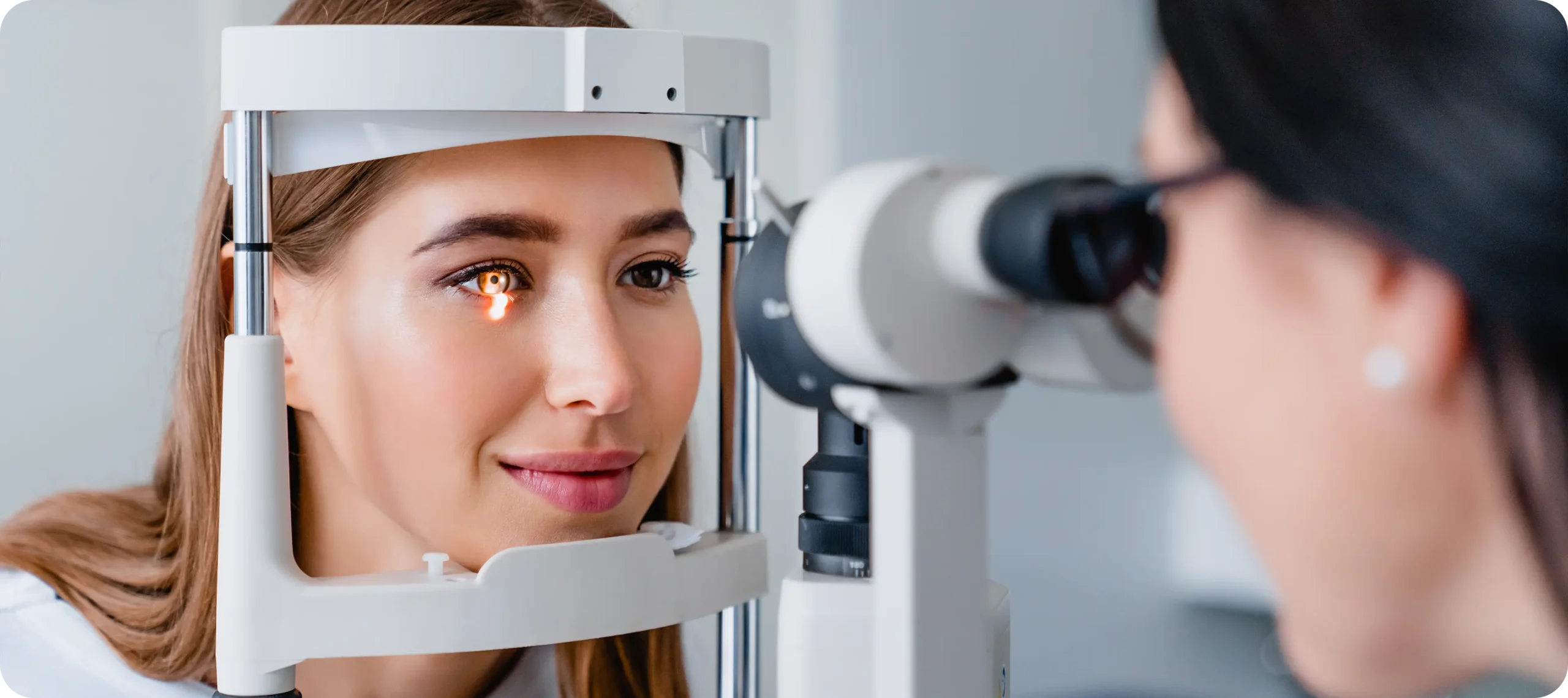Cataracts, commonly associated with ageing, are typically viewed as an issue for older adults. However, an increasing number of younger adults are finding themselves dealing with cataracts, challenging traditional perceptions and highlighting the need for greater awareness about this condition.
Why Do Cataracts Occur in Younger Adults?
While cataracts are predominantly associated with older age, they can and do occur among younger adults due to diverse factors that go beyond simple ageing. The occurrence of cataracts in younger individuals is often surprising and concerning, prompting deeper investigation into their lifestyle, genetic history, and medical background. Understanding these underlying causes helps medical professionals offer better preventive advice, early diagnoses, and tailored treatments to those affected.
Genetics and Hereditary Conditions: Genetic factors play a substantial role in the onset of cataracts at a younger age. Certain inherited conditions increase susceptibility, making individuals predisposed to cataract formation far earlier than typically expected. For instance, congenital cataracts can appear at birth or shortly thereafter, linked directly to genetic abnormalities that disrupt lens development. Moreover, hereditary syndromes like myotonic dystrophy or neurofibromatosis also increase the risk, showing how deeply intertwined genetic inheritance is with ocular health.

Genetic counselling can be beneficial for younger adults with a family history of hereditary cataracts or related genetic disorders. Such counselling can provide critical insights into the risk factors involved, helping patients to adopt preventive measures early on and prepare psychologically and medically for potential issues. Additionally, genetic testing can offer clarity and inform long-term health management plans for those identified as being at higher genetic risk.
Despite the hereditary predisposition, cataracts due to genetic factors can often be managed successfully if identified early. Regular eye examinations are particularly crucial for those with known genetic conditions or family histories. Early detection enables proactive interventions, either slowing cataract progression or allowing timely surgical treatments that help maintain normal vision and reduce disruption to everyday life.
Trauma and Injury: Eye trauma is another significant cause of early cataract formation in younger adults. Injuries ranging from blunt impacts during sports to penetrating trauma from accidents can lead to subtle changes in the lens, sometimes not immediately apparent. Over time, these minor injuries can progress into cataracts as damaged lens proteins gradually clump together, clouding vision. Young adults, particularly those engaged in high-risk activities such as competitive sports or certain occupations, need to be especially vigilant.
The complexity of trauma-induced cataracts stems from the variable nature of injuries. In some instances, the cataract develops rapidly after severe injury, demanding prompt medical attention and intervention. In other cases, the cataract may take several years to form, creating a scenario where the initial injury is overlooked or forgotten. Awareness and education around proper eye protection can significantly reduce such occurrences, highlighting the importance of preventive strategies.
Management of cataracts caused by trauma often involves careful monitoring and early surgical intervention when necessary. Eye specialists typically recommend regular follow-ups for younger adults who have experienced significant eye injuries, enabling them to intervene promptly should cataract formation begin. Timely surgery and tailored rehabilitation programmes can ensure rapid recovery and minimal impact on quality of life.

Medical Conditions: Several systemic medical conditions significantly heighten the likelihood of cataracts in younger adults, notably diabetes and hypertension. Both diseases cause metabolic changes and chronic inflammation within the body, creating biochemical stresses that directly impact the health of the eye’s lens. Diabetic individuals, for example, experience elevated blood sugar levels that lead to lens swelling and structural changes, ultimately accelerating cataract development.
Inflammatory and autoimmune conditions such as uveitis or rheumatoid arthritis further contribute to cataract formation through chronic inflammation, which impairs the lens’s clarity and function. These conditions disrupt normal cellular function in the lens, triggering abnormal protein aggregation and subsequent clouding. Effective management of these underlying conditions through targeted medication and regular monitoring can significantly mitigate cataract risks.
Collaboration between eye care specialists and other healthcare providers is essential to effectively manage cataracts stemming from systemic conditions. A holistic approach, including tight control of diabetes or hypertension, combined with regular ophthalmic screenings, greatly enhances the patient’s chances of preserving clear vision. Proactive management can prevent premature cataract progression, maintaining the overall quality of life for younger individuals.
Steroid Use and Medications: Long-term use of steroids is strongly associated with early-onset cataracts. Steroids, whether administered orally, via injections, inhalation, or through topical eye drops, can disrupt lens proteins and metabolism, facilitating lens opacity and clouding. Younger adults who require steroids for chronic medical conditions such as asthma, allergies, or autoimmune diseases should be particularly aware of this risk and discuss preventative measures with their healthcare providers.
Patients prescribed corticosteroids over extended periods should undergo regular ophthalmic examinations to detect potential cataract development at an early stage. Monitoring can identify subtle lens changes before vision impairment becomes significant, allowing for timely adjustments in treatment or preventative measures. Alternative medications or dosage modifications can sometimes reduce cataract risk while effectively managing underlying conditions.
Education about steroid-related cataracts is essential for younger adults using these medications. Understanding potential risks and symptoms ensures prompt action if vision changes occur, facilitating earlier medical consultation and intervention. Ultimately, informed patients are better equipped to work alongside healthcare providers in balancing necessary treatments against potential ocular side effects.
Lifestyle and Environmental Factors: Certain lifestyle choices and environmental factors markedly increase the risk of cataracts among younger adults. Excessive exposure to ultraviolet (UV) radiation without adequate protective eyewear can cause cumulative lens damage, hastening cataract formation. Similarly, habits such as smoking, excessive alcohol intake, and poor dietary choices further compound oxidative stress and inflammation in the body, negatively impacting lens health.
Proactive lifestyle adjustments can significantly reduce cataract risks associated with environmental factors. Wearing UV-blocking sunglasses, adopting healthier dietary habits rich in antioxidants, quitting smoking, and moderating alcohol intake are powerful preventive strategies. Younger adults particularly benefit from these changes as they not only lower cataract risk but also enhance overall health and reduce the likelihood of other age-related diseases.
Identifying Cataracts in Young Adults
Symptoms of cataracts in younger adults closely resemble those experienced by older individuals, though they are often overlooked initially due to misconceptions that cataracts only affect elderly people. Early awareness and recognition of these symptoms can prevent delays in diagnosis and treatment, greatly enhancing visual outcomes and quality of life.
Common signs to watch for include:
- Blurred or clouded vision:
Young adults might first notice slight difficulty in reading fine print, identifying faces from a distance, or viewing digital screens clearly. Initially subtle, these visual disturbances often become more persistent over time, significantly interfering with daily activities like reading, studying, or working on computers. Because these changes can be gradual, individuals may mistakenly attribute them to tiredness or digital eye strain. - Increased sensitivity to light:
Heightened discomfort from bright lights, known medically as photophobia, is another critical indicator. Young people experiencing cataracts may find outdoor sunlight particularly uncomfortable, causing squinting or headaches. Even indoor lighting or headlights from oncoming vehicles at night might trigger discomfort or glare. This symptom can become disruptive enough to discourage nighttime driving or spending extended periods outdoors. - Difficulty with night vision or driving at night:
Trouble seeing clearly in low-light conditions, particularly noticeable during evening driving or navigating dimly lit areas, can significantly affect younger adults. Common issues include perceiving halos or starbursts around streetlights, car headlights appearing excessively bright, and overall reduced confidence when driving after dark. This decline in night vision can markedly impact independence and safety, reinforcing the importance of seeking early professional evaluation. - Colours appearing faded or yellowed:
Cataracts often cause noticeable changes in colour perception, with previously vivid colours appearing dull, muted, or tinged with yellow. This alteration can diminish enjoyment of everyday activities such as art, fashion, photography, or even simple tasks like selecting clothing or decorating. Such changes can significantly impact an individual’s perception of their visual environment, further underscoring the importance of addressing symptoms early. - Frequent changes in prescription eyewear:
Rapid and repeated changes in eyeglass or contact lens prescriptions may occur as cataracts progress. Individuals might find themselves regularly visiting optometrists due to worsening vision despite recent prescription updates. Frequent prescription adjustments can indicate underlying cataract development and should prompt a thorough evaluation by an eye specialist.
Recognising these symptoms early is essential, as timely identification and intervention substantially improve treatment outcomes and overall visual health for younger adults.
Managing Cataracts in Younger Adults
Early intervention is crucial for effectively managing cataracts in younger adults, significantly enhancing outcomes and preserving visual quality. Recognising and responding swiftly to the symptoms of cataracts not only prevents the condition from worsening but also maintains an individual’s quality of life and independence. Comprehensive management involves regular monitoring, lifestyle modifications, medical treatments, and timely surgical intervention when necessary.
Regular Eye Examinations: Routine eye examinations are vital for detecting cataracts early, particularly among young adults who have underlying risk factors such as diabetes, a family history of cataracts, or a history of eye injuries. Regular visits to an optometrist or ophthalmologist enable early identification of subtle lens changes, even before noticeable symptoms emerge. Advanced diagnostic tools used during these check-ups can pinpoint lens clouding at an early stage, facilitating prompt intervention and helping maintain clear vision.

Additionally, consistent eye evaluations enable healthcare professionals to monitor the progression of cataracts, offering a clear timeline and helping determine when further medical or surgical interventions might become necessary. This structured approach provides patients with peace of mind, knowing their vision is being closely monitored, reducing anxiety and enabling proactive management of the condition.
Lifestyle Adjustments: Proactive lifestyle modifications significantly contribute to slowing the progression of cataracts among younger adults. Protective measures such as wearing sunglasses with UV-blocking lenses are essential, particularly for individuals frequently exposed to sunlight. Reducing or completely stopping tobacco use and moderating alcohol consumption can also markedly reduce the oxidative stress on the lens, mitigating cataract development.
Moreover, adopting a diet rich in antioxidants, vitamins, and minerals can play a protective role in eye health. Incorporating foods high in vitamin C, vitamin E, lutein, zeaxanthin, and omega-3 fatty acids, such as leafy greens, colourful fruits, nuts, seeds, and oily fish, supports overall lens health and visual clarity. These dietary changes not only benefit eye health but also improve overall well-being, reducing other health risks associated with cataract progression.
Medical Treatment and Monitoring: Managing underlying medical conditions is crucial for younger adults dealing with cataracts. Conditions like diabetes, hypertension, autoimmune disorders, and inflammatory conditions significantly impact the lens, making meticulous management of these diseases paramount. Regular medical follow-ups and appropriate medication to keep blood sugar and blood pressure within healthy limits can significantly minimise the risk of cataract progression.
Close collaboration between ophthalmologists, primary care physicians, and other specialists ensures comprehensive care and effective disease management. Regular monitoring through laboratory tests and eye examinations allows medical professionals to adjust treatments promptly, addressing potential complications early and thereby protecting the patient’s vision and overall health.
Surgical Intervention: When cataracts start to substantially impact vision and quality of life, surgical intervention becomes an effective and recommended solution. Cataract surgery in younger adults involves removing the clouded natural lens and replacing it with an artificial intraocular lens (IOL). Modern advancements in surgical techniques have made this procedure extremely safe, minimally invasive, and highly successful, providing rapid recovery and immediate improvement in vision.
Today’s advanced lens technologies offer younger adults tailored solutions such as multifocal lenses, which allow clear vision at multiple distances, or toric lenses, specifically designed to correct astigmatism. These personalised options enable younger patients to enjoy optimal visual outcomes post-surgery, significantly enhancing their quality of life and ability to engage fully in daily activities without dependence on glasses or contact lenses.
Emotional and Psychological Impact: Developing cataracts at a younger age can have profound emotional and psychological effects, often leading to anxiety, decreased self-confidence, and feelings of isolation or embarrassment. Younger adults may find the diagnosis particularly challenging due to social and professional pressures, potentially impacting personal relationships, self-esteem, and career development.
To address these emotional challenges effectively, it is essential to provide holistic support through counselling, psychological support services, and peer networks. Connecting younger adults with others experiencing similar circumstances helps normalise their experience, reduce feelings of isolation, and provide practical coping strategies. Education and open communication about the condition, available treatments, and prognosis further empower patients, allowing them to confidently manage their health and maintain an active, fulfilling lifestyle.

Conclusion
While cataracts in younger adults might seem uncommon, awareness and proactive management can greatly reduce their impact. Understanding the contributing factors, recognising early symptoms, and taking immediate action are key to preserving vision and maintaining a high quality of life. With appropriate medical care, lifestyle modifications, and emotional support, younger adults can effectively manage cataracts and lead fulfilling lives.

